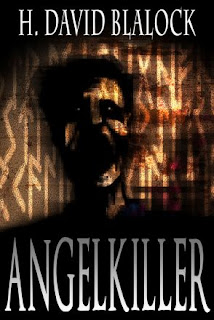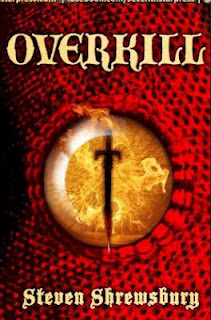 |
| See my review of the same book. |
You may think you know your history, but just reading a few
pages of Abraham Lincoln: Vampire Hunter
and you might just catch yourself second guessing yourself: are vampires real? And was our nation's 16th
president really the meanest, most skilled, vampire hunter to ever grace our
presence?
It's evident that since the release of Stephanie Meyer's Twilight, vampires have definitely sunk
their teeth into almost every piece of literature released within the past few
years. Abraham Lincoln: Vampire Hunter
is no exception. However Seth Grahame-Smith, author of the popular 2009 mash up
Pride and Prejudice and Zombies, does
"vampire" the right way:
staying clear from all the new found "teenaged" romance
associated with present-day blood suckers, Grahame-Smith's vampires do not
seduce the opposite sex–they're actually scary.
Although Abraham
Lincoln: Vampire Hunter was released in 2010, a film adaptation of the book
directed by Tim Burton will be released in the summer—thus what better time to
revisit the tale of Abe Lincoln and his famous slayer days than right now.
Without trying to sound too colloquial, this book has bite.
It's funny, exciting, and so well-researched that it's somewhat
eerie—Grahame-Smith seamlessly (and convincingly) interweaves facts of
Lincoln's childhood, presidential campaign, and the Civil War with fictional
characters that go bump-in-the-night. It's truly an original and entertaining
piece of work—and it's filled with tons of pictures.
The epistolary-style book basically tells Lincoln's life
story through a set of "secret diaries" held by a vampire for many
centuries. Lincoln's mission to defeat vampires begins when he witnesses his
mother's death by vampire at 9-years-old. At this time, Lincoln also discovers
that his grandfather was also killed by the same demon in 1786. Lincoln avenges
his mother's death and then befriends a "good" vampire who trains
him: he learns some facts of vampirism and how to defeat them. As he grows
older, Lincoln becomes stronger and more skilled. Later Lincoln discovers that some slave
owners are in fact vampires and purchase slaves for sustenance, not labor. Thus
begins his mission to end slavery. Throughout the book Lincoln also befriends
some other famous historical figures, such as Edgar Allen Poe.
In fear of giving too much away, the plot summary will end
now. But it's definitely worth a read. While it's technically written for ages
13 and up, college aged students and adults will probably appreciate it
more.
This guest post is contributed by Lauren Bailey.
This book may have been received free of charge from a publisher or a publicist. That will NEVER have a bearing on my recommendations. Any guest post is checked to verify that the link is harmless as far as I can tell.
















